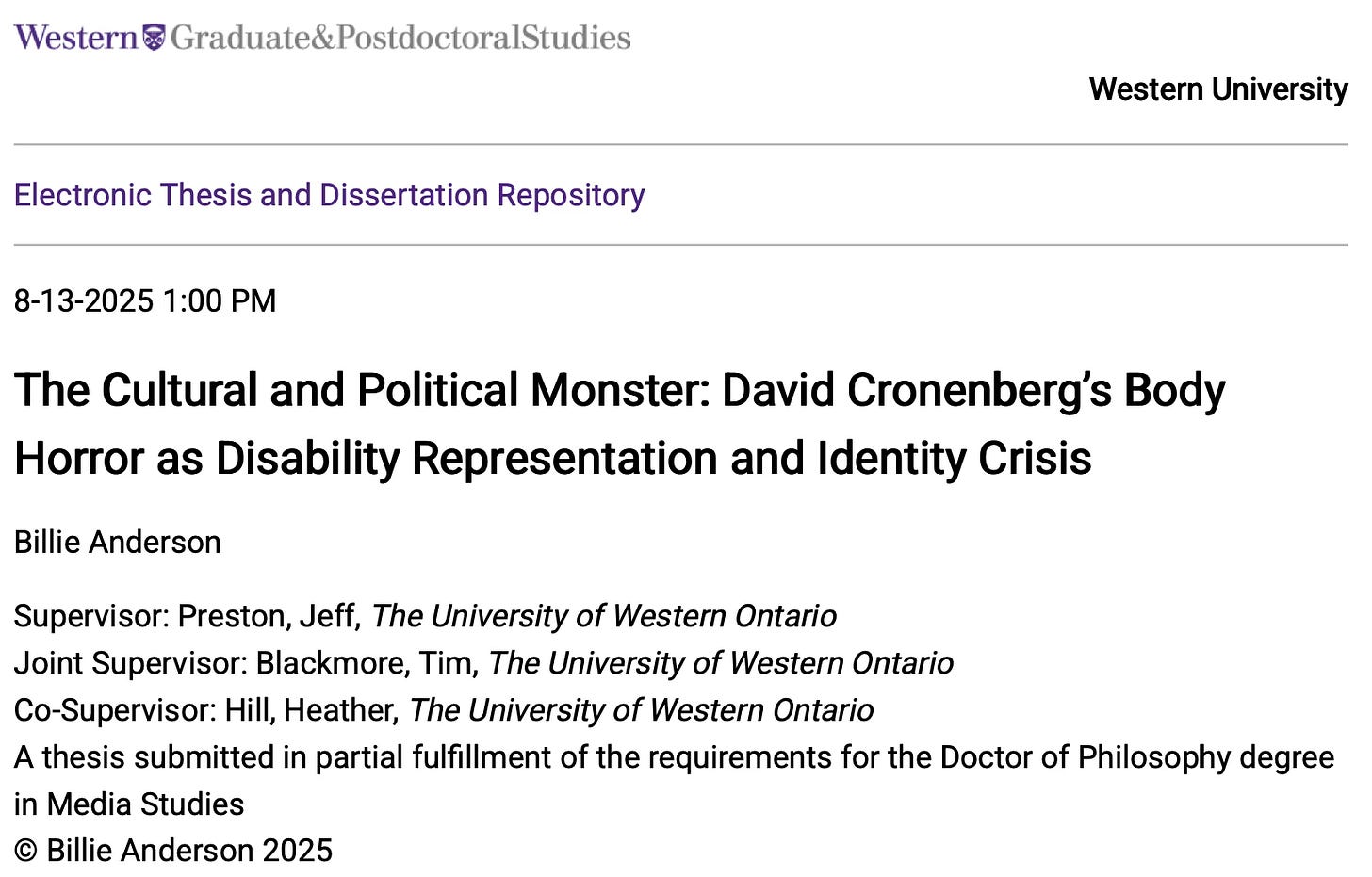This Showing Only
On why movies never meet us in a vacuum, and why the context of watching matters as much as what’s on screen.
I’ve been thinking for a while that I don’t just want to write about movies themselves, but also about the context in which I see them.
That’s a hard pitch to make to an official movie site. For the most part, people visit places like MovieJawn—where I’ve written my film criticism for the better part of three years—to find out if a movie is worth seeing, not whether I, Billie Anderson, connected with it because of what was going on around me when I saw it.
At TIFF this year, though, I kept noticing how much conversations drifted toward context. Not just what we were watching, but how we were watching: our headspaces, our exhaustion, the fact that we were on our twentieth movie in a week or our fifth movie in a single day. And I realized that so much of my interaction with films comes through those filters—my mood, the day I’ve had, who I’m with, the things I’m feeling right in that moment.
I’ve been lucky to have opportunities to write about film in more professional and formal settings, but I also want to carve out a space to talk casually about movies, whether new releases or old favourites. Because everybody comes to a movie carrying something: the time of day, the busyness of their week, a breakup, hunger, fatigue. All of that shapes how a story resonates. Watching movies is always communal in some sense, but our opinions often come down to context—sometimes the big context of our lives, sometimes the smaller context of a day, a week, or a year.
This year especially, I’ve had conversations about films I loved that others didn’t, and it can be hard to convey why something hit me the way it did. For example, out of Venice a lot of people weren’t taken with Guillermo del Toro’s Frankenstein. But for me, it was a deeply personal experience. I have just finished my dissertation, where I wrote about the cultural and political importance of monsters—the way this figure of the human monster can help us empathize with people who live differently, in different bodies, or in ways society marks as abnormal. I’ve tied those ideas to disability and how monster movies, in their own way, can teach us about navigating and understanding disabled experience. In no way do I expect you to read a 300 page document to connect with anything I’m about to say here, but if you are interested, it is published on my university’s website.
So seeing del Toro’s Frankenstein at TIFF felt special because I could feel how much care he brought to the character. He has always been a director who insists on his monsters’ capacity for love: monsters who not only receive care but also give it, in ways that make audiences rethink what monstrosity even means. Jacob Elordi’s performance, too, was so careful, so precise in balancing the monstrous with the human.
The context I brought into that screening was five years of academic research on exactly this question: how important it is to represent monsters as complex, redeemable figures. And then here comes del Toro, doing just that. So while others may have left disappointed that it wasn’t faithful enough to the novel, I was left with something else: the satisfaction of seeing my own research and care reflected back at me in the film.
I completely understand the criticisms. I don’t think people are wrong for feeling let down or disconnected. But for me, at this moment in my life—leaving academia, stepping into new ways of writing and thinking—it landed with a resonance I can’t separate from my own context. That’s the kind of space I want this to be: a place to write about not just the films themselves, but the contexts, big and small, that shape how they stay with us.
So that’s what I’m setting out to do here. To write about the films I’m watching—recent releases, rewatches with friends—and also about the day leading up to them, what I was feeling, what I planned to do after. I want to think about how a so-called “perfect hangout movie” lands differently than an art-house classic at 10 p.m., or how a three-star-with-friends film can feel more alive than a five-star masterpiece in the wrong moment. Context shifts the viewing, and I want to explore that, starting with myself as the test subject.
What does that mean exactly for this Substack? Expect reflections that are part diary, part movie review. Sometimes I’ll be writing about the biggest new releases, sometimes I’ll be digging into older films I’m revisiting, and sometimes I’ll just be capturing the weird little ways a movie intersected with my life on a given day. You won’t find star ratings or consumer advice here—you’ll find experiments in how movies meet us where we are, and how our lives shape what we see in them.
I already write film criticism in more traditional venues—Letterboxd for quick reactions, Twitter for fleeting thoughts, MovieJawn for longform reviews, The Conversation for more academic or cultural analysis, BlueSky when I remember it exists. But this Substack is meant to be something different: a looser, more personal space where I can write about film without worrying about format, deadlines, or word counts. If you already follow me in those other places, this is the place where you’ll get the connective tissue—the headspace, the mood, the messiness that doesn’t always fit in a review but is often what makes a viewing stick with me.
So if you’ve ever wanted to know not just what I thought of a movie but how I arrived at those thoughts, this is where you’ll find it. Thanks for caring about my words.


